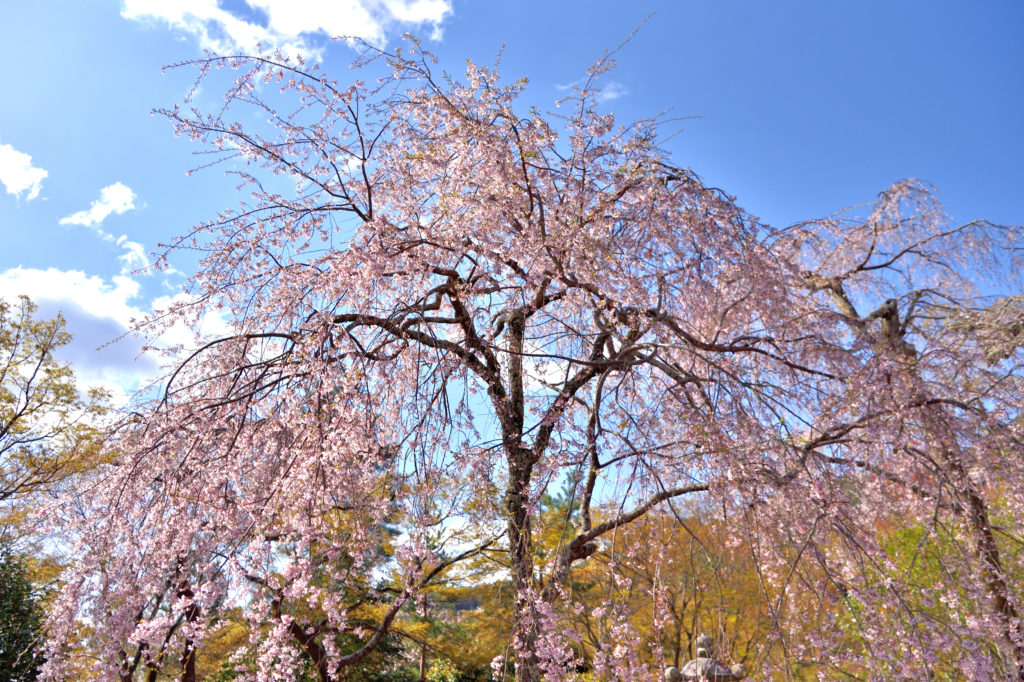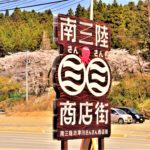
Scenery of fascination that cherry tree of the Katsura River shore and Togetsu Bridge weave

The "Togetsu Bridge", a scenic spot representing Kyoto, is a 155-m-long wooden bridge that spans the Katsura River flowing through the central area of Arashiyama, Kyoto. The name of Togetsu Bridge is said to have been derived from Emperor, Kameyama, who named it Togetsu Bridge when it saw the moon in the night sky moving as if it were crossing the bridge. The scenic scenery created by the combination of the rich nature of Arashiyama, the old city full of emotions, and the tasteful Togetsu Bridge is a scenery that symbolizes Arashiyama.

About 1500 trees of cherry blossom trees such as Somei Yoshino and Yamazakura were planted in the Arashiyama area, a tourist destination representing Kyoto, and beautiful flowers were blooming in early April. The beautiful scenery that the cherry blossoms on the shore of the Katsura River and the cherry blossoms of the Arashiyama mountain weave with the Togetsu Bridge is just like a postcard. It is said that the beginning of Arashiyama cherry blossoms is that the Gosaga Emperor of Kamakura period built the Kameyama Imperial Villa nearby and transplanted cherry trees from Yoshino.

Springy attire of Tenryu-ji Temple and Seiryo-ji Temple

"Sogenchi garden" under "Daihojo" of "Tenryuji" near Togetsu Bridge is created by Soseki Muso, who is a Zen priest of Rinai sect in Northern and Southern Dynasties era, and the garden that leaves its appearance in the garden at that time.

When I went through the "Sogenchi garden" and in front of the "Tahoden", there was a branch of the famous cherry blossoms. If you go up the slope in the precinct, there is a big branch cherry blossoms there, and the angle to look up and the angle to look down also change, you can enjoy various expressions.


The garden is designed for excursions so that you can take a walk through the garden. In the spring season, Tenryu-ji Temple is dominated by twig cherry blossoms, but in addition, camellia, yamabuki, quince, mountain azalea, etc. are colorfully bloomed, and I could enjoy spring attire.

Walk straight north from Arashiyama's Togetsu Bridge, and you can see white and pink cherry blossoms in front of the main hall from the gate of Seiryoji temple, which is visible at the end.

Seiryoji temple known by the name of "Sagashakado" honors the national treasure "Shakanyorai statue" with its unique decoration. In the season when you feel the spring breeze, the colors of the buildings carved in history, such as the Somae Yoshino for the multi-story pagoda and the Shidarezakura for the main hall, harmonize and attract the hearts of the visitors.

Graceful spring landscape that colors the waterside "Daikakuji"

Starting as the remnant of Saga Emperor, Daikoku-ji Temple is known as the Imperial Palace because it includes the successive Emperors and royalty. The highlight of the cherry blossoms at Daikakuji is the weeping cherry blossoms in front of Chokushi gate.

Osawa Pond, which spreads to the east of Daikakuji Temple, is the oldest garden pond in Japan, created by the Emperor Saga to imitate Totei Lake in China. The cherry blossoms are colored all at once around the pond, and the cherry blossoms reflected in the water are beautiful. In addition, the contrast between Shinyoho Tower and cherry blossoms on the shore was a very elegant view.


The scenery of the Osawa pond which is overlooked from the observation moon stage on the east side of the 5 Great Hall built in the pond is exceptional.


The movie "Onmyoji" directed by Yoji Takita was produced in 2001, and Daikakuji temple was used as the location of this movie. In this film, Kyogen performer, Mansai Nomura played the leading role, Seimei Abe.

As you walk around Osawa Pond, the cherry blossoms bloom around the surface of the water and the idyllic scene of waterfowl spreads. The red balustrade of the bridge over Tenjin Island and the heart-cage tower (Taho tower) were reflected in the spring scenery.



It was a trip from Arashiyama in spring to Ashino where you can enjoy the elegant cherry blossoms in a leisurely time.

Access
To Daikakuji temple:
Daikakuji is a 15 minute walk north from JR Saga-Arashiyama Station (15 minutes, 240 yen one way from Kyoto Station) or a 25 minute walk north of Keifuku Arashiyama Station. Alternatively, take bus number 91 from Saga-Arashiyama Station (5 minutes, 230 yen, 2-3 buses per hour) or bus number 28 from central Arashiyama (10 minutes, 230 yen, 2-3 buses per hour) to access the temple.











